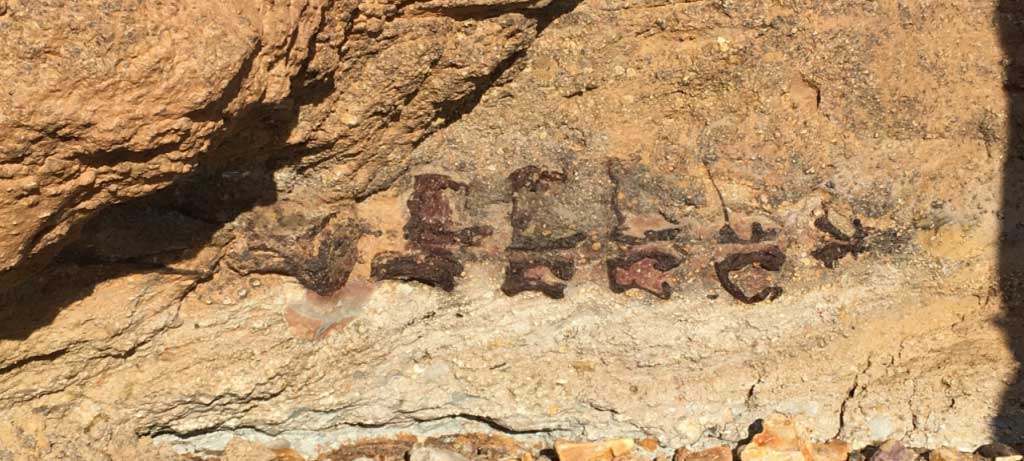 Fossil bones, especially those of dinosaurs, are not easy to find unless you know what you are looking for. There are two places to look for bones, the cliffs and the beach. The bones are most commonly black, although they may have orange and white/grey streaks, and are shinier than the rocks they are found in. When found in the cliffs, the bones are most likely to be intact, especially if they have other bones next to them, and depending on the rocks you find them in. If you find them in either a light grey mudstone or a reddish-brown soft mudstone, they will probably be damaged, compacted and crushed, although they are more likely to be articulated (this is not likely to always be the case, as some smaller elements; e.g. teeth and small bones are quite resistant to breaking). If they are in a light brown rock, with lots of bits of wood, then they will be in better condition, but will have been damaged before burial (good luck in getting them out of the rock, it’s really hard and clingy, so extraction with a hammer and chisel will most likely result in a pile of bone chunks).
Fossil bones, especially those of dinosaurs, are not easy to find unless you know what you are looking for. There are two places to look for bones, the cliffs and the beach. The bones are most commonly black, although they may have orange and white/grey streaks, and are shinier than the rocks they are found in. When found in the cliffs, the bones are most likely to be intact, especially if they have other bones next to them, and depending on the rocks you find them in. If you find them in either a light grey mudstone or a reddish-brown soft mudstone, they will probably be damaged, compacted and crushed, although they are more likely to be articulated (this is not likely to always be the case, as some smaller elements; e.g. teeth and small bones are quite resistant to breaking). If they are in a light brown rock, with lots of bits of wood, then they will be in better condition, but will have been damaged before burial (good luck in getting them out of the rock, it’s really hard and clingy, so extraction with a hammer and chisel will most likely result in a pile of bone chunks).

Although sometimes you can be lucky and find unweathered bones, beach-found bones are often heavily weathered, so you have to know about the internal structure. Often you can find this out by breaking the bone in half, but as this is not very nice to do, you can often see it on the outer surface. Look at the rounded edges of the bone that you’ve found, and if there are what appears to be a honeycombed pattern, a cluster of either white-light grey or occasionally orange blobs, between 0.5-1mm in diameter. These will be present more commonly on the most distant parts of the bone. The bones will be less shiny, and have a dark grey appearance.
You will also find lumps of lignite, or fossil wood on the beach, which can look like bone. However, there are few tests that will show whether they are either bone or lignite.
- Does it look like burnt wood? If so, it’s lignite.
- Lignite is usually lighter than fossil bone, although this is not always the case.
- Weathered bone is usually lighter in colour than lignite, although again sometimes the colour is almost identical, especially when wet. You can try tapping the bone with a tuning fork, as this will produce a higher ringing sound if it is bone. However, there is little chance of you actually owning a tuning fork, although tweezers will do the same job.
- If you wet the “bone” and then scratch it with your fingernail (unless, like me, you bite them, in which case, a plastic knife or spoon will do) then rub it on your finger, if there is a black smudge, then it’s wood. However, sometime if the lignite is too wet, there isn’t a visible smudge, so you can’t tell.
- Finally, you can look for the honeycomb structure. I should add thought, that there are often lumps of flint and rock on the beach that are black and display what looks like a honeycomb structure. The only way to see if these are bone or not is actually quite simple. With the flints, the “combs” of the honeycomb will be darker than the honeycomb outline. In the other rock, which I believe is actually tarmac from the carpark up at Hanover Point that has been transported by tidal action, the honeycomb pattern is more angular, and the “combs” are larger, 3mm or larger.
The only really accurate way of identifying bone compared to lignite is experience. Once you know what you are looking for, it becomes a lot easier. Try going on an organised fossil dig, or visiting the local museums, or even just asking the fossil hunters that you can often find wandering along the beach.
